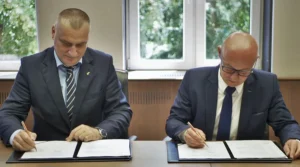What goes on in Poland on the 18th of June.
Talks about the Baltic Pipe route in Warsaw
On June 13 this year in Warsaw, at the headquarters of the General Directorate for Environmental Protection, a meeting of Contact Points to the Convention on Environmental Impact Assessment in a Transboundary Context, prepared in Espoo on February 25, 1991, was held.
The meeting was attended by representatives from Sweden, Germany and Denmark. The Polish side was represented by the deputy director of the Environmental Impact Assessment Department of GDOŚ and the head of the Department for Transborder Issues and Strategic Environmental Impact Assessments.
The purpose of the meeting was to exchange information on the course of national environmental impact assessment procedures also in a cross-border context, as part of improving international cooperation in the application of the Espoo Convention on the Baltic Pipe project.
The planned undersea gas pipeline from Denmark to Poland with a total length of 250-280 km has various outbound options in Denmark and Poland. In addition, alternative routes through the Baltic Sea are being studied.
How much does the nuclear energy cost? Ministry of energy publishes a report
The Department of Nuclear Energy of the Ministry of Energy publishes a summary of the „The Full Costs of Electricity Provision”, which was published by the OECD Nuclear Energy Agency in April this year. The report contains a comprehensive analysis of electricity costs taking into account not only the construction and operating costs of the plant itself, but also network costs resulting from the operation of the power plant in the energy system, or maintenance of provisions to secure continuity of supply and health and environmental costs. Analyzes based on data and knowledge around the world show that when comparing total costs, nuclear power is the cheapest zero-emission source of energy.
Three levels of energy costs
The report synthesizes the costs of generating energy on three levels. The first one includes costs at the power plant level, including construction costs, fuel costs and costs related to the operation of the power plant as well as the costs of decommissioning the power plant.
The second refers to costs incurred at the level of the power system, which is related to the transmission and distribution network. This level includes the costs that the plants bring to the system as a result of expansion, reinforcement or grid connection, as well as the costs of maintaining hidden reserves, i.e. additional available capacity, activated when the efficiency of other sources – usually wind and solar – is uncertain or variable.
The third – the widest – level includes items that affect communities outside the power sector. These are so-called external or social costs, which include the impact of air pollution on a local or regional scale, local climate change, the costs of large and not always covered by accident insurance, as well as the exclusion of land from use and the limitation of available resources. In addition, social costs include the impact of the choice of different electricity technologies on the security of energy supply, employment and regional cohesion as well as on innovation and economic development. Negative effects are included in the total cost of technology, while positive effects should, as a rule, be deducted as a social benefit.








